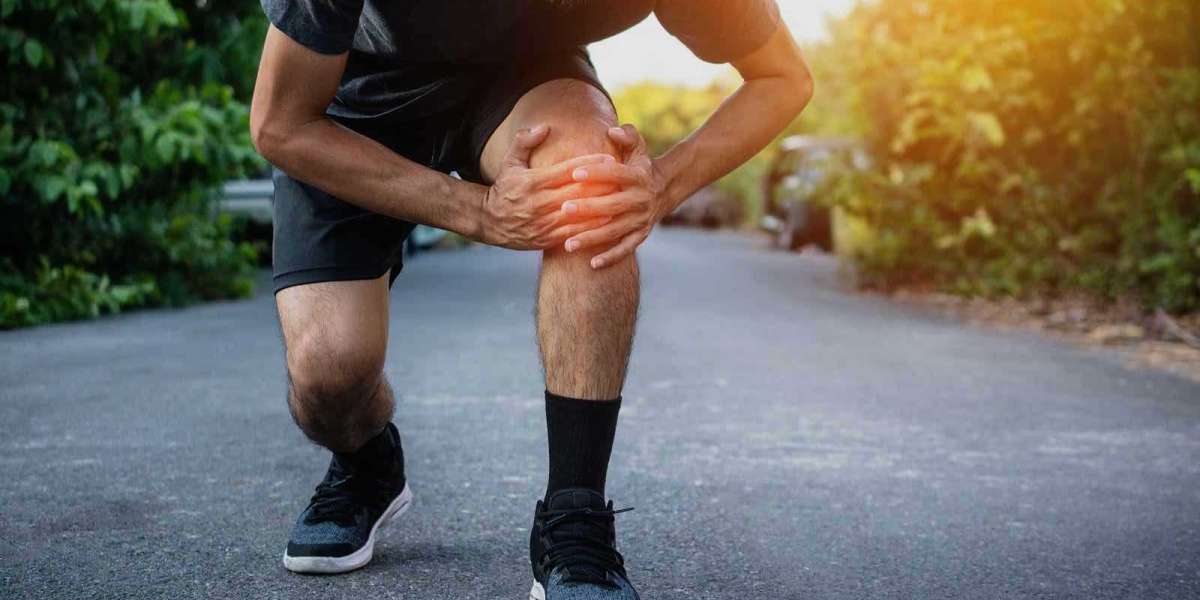Knee pain is an incredibly common and often debilitating condition that can affect any age group. It is a sharp, throbbing sensation that can be difficult to shake off and can lead to considerable discomfort and reduced mobility. Left untreated, knee pain can become chronic and more difficult to manage. Fortunately, there are several steps you can take to reduce the symptoms of knee pain, from lifestyle changes to medical treatments.
Anatomy of Knee Pain
Knee pain can be a debilitating experience, especially when it's throbbing and chronic. Understanding the anatomy of your knee can help you identify what might be causing the discomfort. The knee is made up of many components, including bones, cartilage, tendons, and ligaments.
The thigh bone (femur), shinbone (tibia), and kneecap (patella) are the three main bones that make up the knee joint. These bones are held together by ligaments that provide stability to the joint. The meniscus is a piece of cartilage between these bones that cushions movements in your knees.
Throbbing knee pain can be caused by a number of factors such as injury or overuse. If you're experiencing this type of pain, it could be due to damage to any one of these structures within your knee joint.
Causes of Throbbing Pain
Throbbing pain can be a debilitating experience, and finding the underlying cause is crucial for effective treatment. Throbbing pain is often described as a pulsing sensation that comes and goes or remains constant. It may occur in various parts of the body, including the head, joints, muscles, and abdomen.
One common cause of throbbing pain is inflammation. Inflammation occurs when there is damage or infection to tissue resulting in swelling and redness. This type of pain can also result from injuries like sprains, strains or broken bones. Other possible causes include migraines which are severe headaches that typically affect one side of the head; cluster headaches which are severe but rare headaches occurring on one side of the head; menstrual cramps that occur before or during menstruation in women; fibromyalgia which causes widespread musculoskeletal pain along with fatigue and sleep disturbances.
Diagnosing
Throbbing pain can be a sign of various underlying health conditions, ranging from minor injuries to serious illnesses. If you experience throbbing pain that persists or becomes more intense over time, it’s important to seek medical attention right away. Pain management doctors specialize in diagnosing and treating all types of pain, including throbbing pain.
One of the first steps in diagnosing throbbing pain is identifying its location and intensity. This information can help your doctor determine which tests or imaging studies may be necessary to pinpoint the cause of your discomfort. In some cases, lifestyle changes such as improved diet and exercise habits may help alleviate throbbing pain without the need for medication or surgery. However, if more aggressive treatment is needed, your pain management doctor can develop a personalized plan that addresses your specific needs and goals.
Treating Knee Pain
Knee pain can be a frustrating and debilitating condition, especially if it's accompanied by throbbing pain. The good news is that there are many treatment options available to help you manage your symptoms and get back to living your life pain-free. Whether you're dealing with acute or chronic knee pain, the first step in finding relief is to schedule an appointment with a knee pain doctor.
During your appointment, the doctor will perform a physical examination of your knee and ask about your symptoms. They may order imaging tests such as x-rays or MRIs to get a better understanding of what's causing your knee pain. Once they have diagnosed the underlying condition, they can recommend various treatments ranging from medication and physical therapy to minimally invasive procedures like injections or arthroscopy.
It's important not to ignore knee pain because it can worsen over time if left untreated.
Common Treatment Option
Knee pain is a common problem that affects people of all ages. There are many different causes of knee pain, and it can be difficult to determine the underlying cause without the help of a qualified doctor. If you are experiencing throbbing knee pain, it is important to seek medical attention as soon as possible. A knee pain doctor can help diagnose the cause of your pain and recommend an appropriate treatment plan.
One common treatment option for throbbing knee pain is physical therapy. This involves working with a trained therapist who will develop an individualized program to help improve your strength, flexibility, and range of motion in your knees. Physical therapy can also help reduce inflammation and swelling in the affected area, which can alleviate discomfort and improve overall function.
Another potential treatment option for throbbing knee pain is medication.
Exercise and Prevention Tips
If you experience throbbing knee pain, exercising can help you ease the symptoms and prevent further damage. However, it is important to consult with your pain management doctor before starting any exercise routine. They will provide guidance on appropriate exercises that can alleviate your knee pain and prevent it from worsening.
One of the best exercises for managing knee pain is low-impact aerobic exercise. This includes walking, cycling or swimming, which helps strengthen muscles surrounding the knees without putting too much pressure on them. Additionally, strengthening exercises such as squats and lunges are also helpful in building up muscles around the knees to support them better.
In addition to exercising, there are several other prevention tips that can help reduce knee pain. Maintaining a healthy weight reduces stress on the knees while wearing comfortable shoes with good arch support protects against injuries caused by sudden twists or turns.
Conclusion: Taking Care of Your Knees
Taking care of your knees is an essential part of maintaining a healthy lifestyle. The knee joint is one of the most complex joints in our body and endures a lot of stress throughout the day, which can cause pain and discomfort if not taken care of properly. By taking some simple steps, you can ensure that your knees remain strong and healthy for years to come.
One way to take care of your knees is by exercising regularly. Low-impact exercises like walking, cycling, and swimming can help strengthen the muscles around your knee joint without putting too much pressure on them. Stretching before and after exercise can also help prevent injury by improving flexibility in the surrounding muscles.
Another way to take care of your knees is by maintaining a healthy weight. Excess weight puts extra strain on our knee joints, which can lead to pain and even damage over time.








